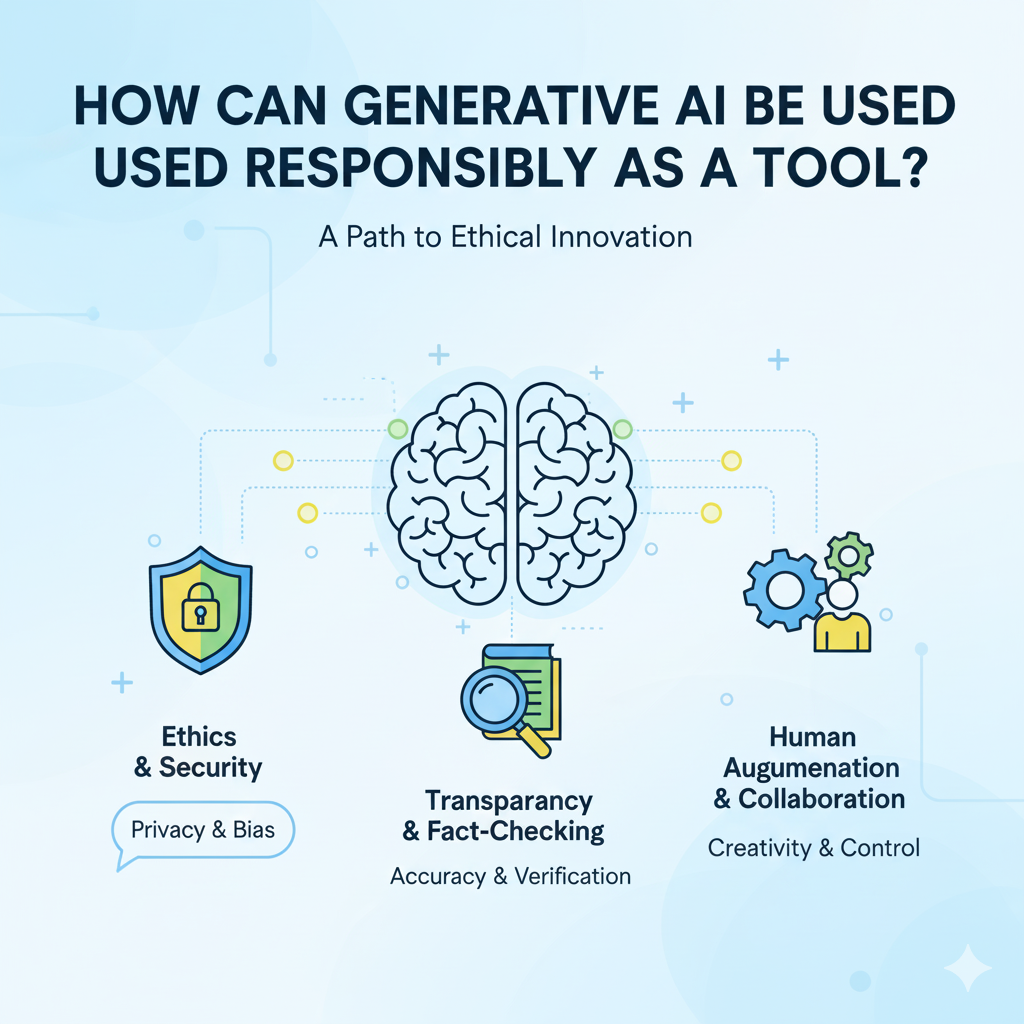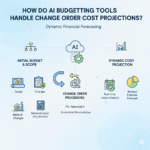Generative AI is no longer just a buzzword. From writing content and generating code to creating images, music, and even business strategies, it’s everywhere. Chances are you’ve already used it whether through tools like ChatGPT, DALL·E, MidJourney, or even AI-powered features inside your favorite apps.
But here’s the big question: are we using generative AI responsibly?
Like any powerful technology, AI comes with both opportunities and risks. It can supercharge productivity, but if used carelessly, it can lead to misinformation, ethical issues, or even a loss of human trust.
In this article, let’s break down how generative AI can be used responsibly as a tool balancing innovation with ethics, and efficiency with accountability.
Why Responsibility Matters in Generative AI
Before diving into the “how,” let’s understand the “why.”
AI isn’t like a regular tool—it learns from huge datasets, often containing human-created content, cultural patterns, and even biases. If not handled carefully, it can:
- Spread misinformation (fake news, deepfakes).
- Reinforce harmful stereotypes.
- Misuse private or copyrighted data.
- Replace human judgment in areas where accountability is essential.
That’s why responsible use is about making sure we guide AI, not let AI guide us blindly.
1. Transparency: Be Clear About AI’s Role
If you’re using generative AI to create content, design, or even business strategies, it’s good practice to be transparent. People should know when something is AI-generated versus human-created.
For example:
- Writers/Marketers: Mention when AI assisted in creating a blog, ad copy, or social media post.
- Educators: If AI tools are used for study materials, clarify their involvement so students don’t assume it’s entirely human-prepared.
- Businesses: When using AI in customer service (like chatbots), disclose it upfront.
Being transparent builds trust. It signals that you’re using AI as an assistant—not as a replacement for authenticity.
2. Human Oversight: Keep People in the Loop
Generative AI is great at producing output fast, but it lacks judgment, empathy, and context. That’s why human oversight is non-negotiable.
- Editing and fact-checking: AI can draft an article, but a human should verify facts, refine tone, and ensure accuracy.
- Creative industries: AI can help brainstorm ideas, but final creative direction should come from humans.
- Healthcare or finance: AI can assist in analysis, but decisions must remain with qualified professionals.
Think of AI as a junior assistant—it can help, but it shouldn’t make the final call.
3. Avoiding Bias and Stereotypes
AI learns from the data it’s trained on. If that data carries biases (gender, race, cultural), the AI can unintentionally reproduce them. Responsible use means:
- Reviewing AI outputs critically.
- Questioning whether results look biased, stereotypical, or unfair.
- Using inclusive prompts and adjusting AI responses when needed.
For example, if a generative AI tool always shows “doctors” as men and “nurses” as women in images, it’s reinforcing stereotypes. Responsible users should identify this and correct it.
4. Data Privacy and Consent
Generative AI sometimes pulls patterns from huge datasets, which may include sensitive or copyrighted information. As responsible users, we need to:
- Avoid feeding personal or confidential data into AI systems unless they’re secured.
- Understand where the AI stores or processes information.
- Respect copyright—don’t pass off AI-generated versions of someone else’s work as your own.
For businesses, this means ensuring compliance with data protection laws (like GDPR in Europe, or India’s Data Protection Act).
5. Using AI to Enhance, Not Replace Humans
The fear that “AI will take all our jobs” is everywhere. While it’s true that AI will automate some tasks, the responsible approach is to use it as an augmenter of human ability, not a replacer.
Examples:
- Content creators can use AI for first drafts or idea generation, while focusing on storytelling and personalization themselves.
- Teachers can use AI to prepare practice questions, but still provide real guidance and mentorship.
- Businesses can use AI for routine customer queries, while humans handle complex or emotional issues.
This balance ensures efficiency without losing the human touch.
6. Setting Boundaries in Sensitive Areas
Some areas need extra caution with AI:
- Healthcare: AI can assist in diagnosis, but it shouldn’t prescribe treatments without doctors.
- Law: AI can help with research, but legal advice must come from licensed professionals.
- Politics: AI-generated deepfakes or campaign content can mislead voters—something to be avoided at all costs.
Responsible use means drawing clear boundaries: where AI can help, and where it must stop.
7. Educating Users About AI
Many people use AI without fully understanding how it works. A big part of responsible use is educating yourself and others:
- Learn AI’s strengths and limitations.
- Teach teams or students about verifying AI outputs.
- Spread awareness about ethical concerns (like deepfakes or plagiarism).
When people understand AI better, they use it more responsibly.
8. Innovating for Social Good
Finally, responsible AI use isn’t only about avoiding harm—it’s also about creating positive impact.
- In education, AI can make learning accessible in regional languages.
- In healthcare, AI can help doctors in rural areas analyze reports faster.
- In agriculture, AI tools can guide farmers on weather, soil, and crop planning.
When used thoughtfully, generative AI can bridge gaps and bring opportunities to places where resources are limited.
Conclusion: Responsible AI Is Shared Responsibility
Generative AI is a tool—and like any tool, the outcome depends on how we use it. A hammer can build a house or break a window. AI is no different.
Using it responsibly means:
- Being transparent about its role.
- Keeping humans in control.
- Respecting privacy, ethics, and fairness.
- Using it to empower people, not replace them.
So, the real answer to “How can generative AI be used responsibly?” is this: by remembering that AI is here to serve us, not the other way around. If we balance efficiency with ethics, AI won’t just be a tool—it will be a partner in building a smarter, fairer future.
Discover more from PratsDigital
Subscribe to get the latest posts sent to your email.


